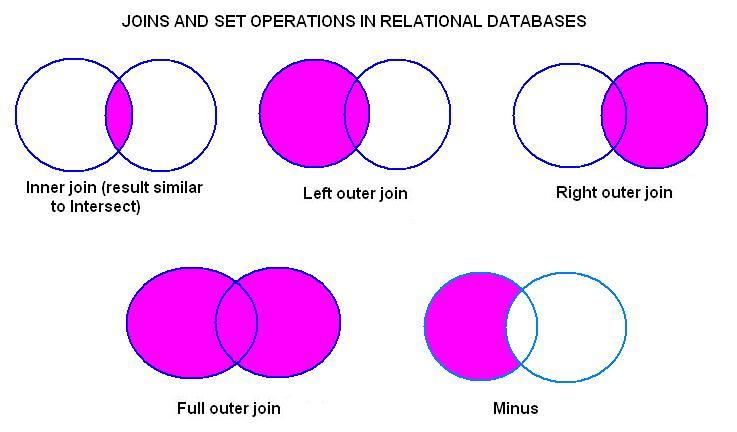JOIN OPERATOR
The
JOIN
operator specifies how to relate tables in the query. The JOIN
operator is one of the set operations available in relational
databases.
The
following join types of
join are available in most relational databases:
INNER
OUTER (LEFT.
RIGHT, FULL)
CROSS
Joins
may be represented as Venn diagrams, as
shown below along with other common set operations:

INNER
JOIN: Select only those rows that have
values in common in the columns specified in the ON clause.
LEFT,
RIGHT, or FULL OUTER
JOIN: Select all rows from the table on
the left (or right, or both) regardless of whether the other table has
values
in common and (usually) enter NULL where data is missing.
(Note: FULL OUTER JOIN not implemented in Access.)
CROSS
JOIN (not illustrated - not exactly a set operation):
Select all possible combinations of rows and columns
from both tables (Cartesian product). Not available in Access but can
"happen" by not specifying relationships between tables or not setting
up the appropriate joins in a query. (Not A Good Thing - the
query may run for a very long time and
produce a huge, not very useful result set.)
Access
uses
the ANSI (American
National Standards Institute) style, with the JOIN and ON keywords. Access, MySQL, and Oracle all use similar
syntax, with more join types and options and other set operations in
MySQL and Oracle (CROSS JOIN, FULL
OUTER JOIN, INTERSECT, MINUS).